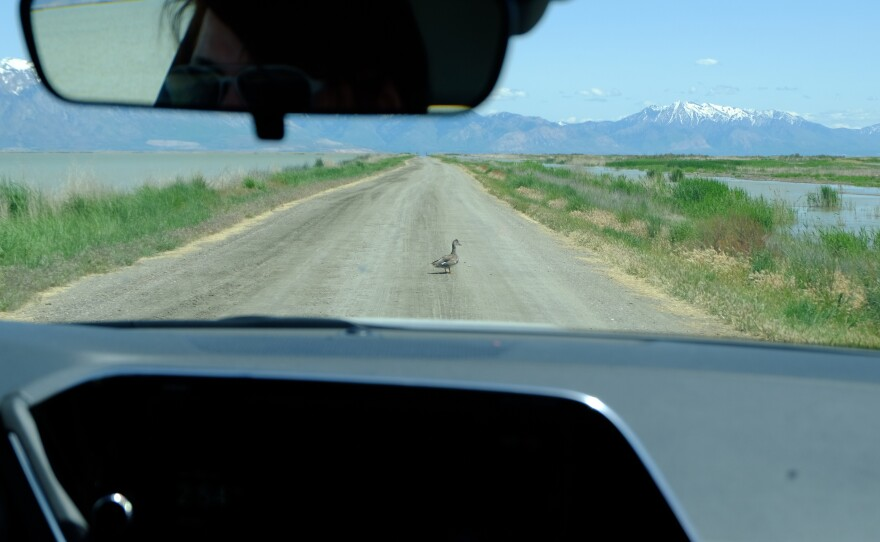I recently drove through the Bear River Migratory Bird Refuge Auto Route Tour alongside Sheri Quinn and Colleen Meidt. Come along with us as we weave around the wetlands of Great Salt Lake with prime viewing of thousands of migratory birds.
‘Birding’ often gets a reputation as a hobby for elderly people or something that you need skills and tools to start. Sure, binoculars, a bird book, or a bird-nerd friend are helpful, but you can certainly learn these skills yourself and with few tools.
For this experience, all you really need is a car, and even that is up for debate. We saw quite a few people biking along this path.
The refuge is roughly 80,000 acres of habitat for migrating birds. There is an interactive visitors center open Tuesday through Saturday, but arguably the best part is the 12-mile auto route loop.
I chatted with the refuge’s Visitor Services Manager Karleen Vollherbst, who explained there is lots to do around the refuge aside from the auto tour, since it takes a few hours to do the whole thing — it is a 12-mile loop and another 12 miles to get there from the visitors center, so total it is about 36 miles around.
“It's a pretty good commitment to head out on the auto tour. So for families, a lot of times I'll recommend they stop at the visitor center before or after going on the auto tour," Vollherbst said. "If you have young kids that are antsy in the car, the visitor center is the place to be, whereas the auto tour is for people that have a little bit more patience.”
Aside from the visitors center and birding, you can enjoy photography, hiking, cycling, running, hunting, fishing, painting, and more throughout the refuge.
Our tour lasted about 3 hours, including a stop for a picnic lunch. We were using a hybrid car with a slightly annoying song and hum that you might hear in the background, but this road is well-maintained and, weather permitting, any car could make it.
We started our journey at about noon on a Sunday. Since the visitors center was closed, we cruised by on the paved forest road, breaking every so often if a bird caught our eyes. After the first 12 miles, we stopped at the pavilion for a bathroom break and to watch cliff swallows darting in and out of their nests.
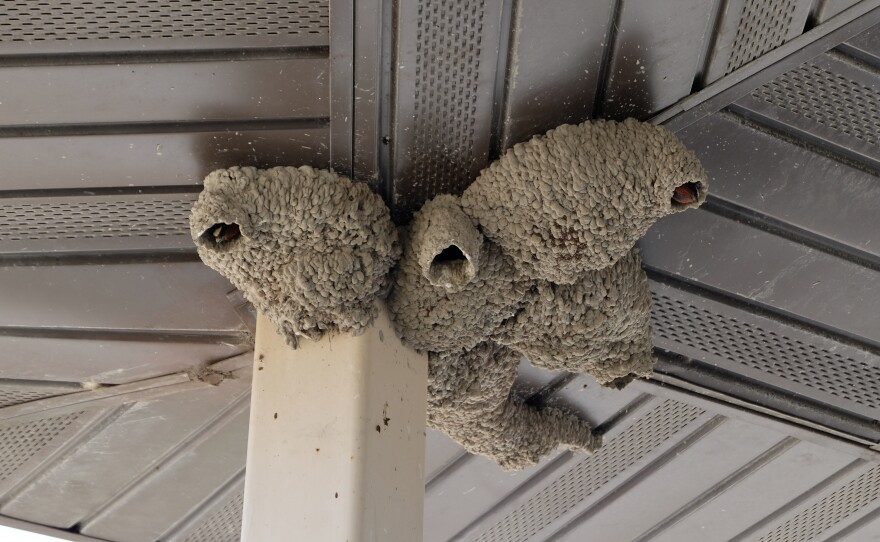
Swallows poking their heads out of their nests. (Colleen Meidt, Utah Public Radio)
We also stopped to chat with a fisherman, Kwame. He was hoping to catch some channel catfish or ‘cats.’
“We’re just fishing for catfish. Yeah, there’s some actual monsters in here. We've seen some big cats being pulled out of here and we've got a couple of ourselves," Kwame said, "It's a nice drive out here too. So yeah just trying to find some catfish, carp, whatever bites pretty much.”
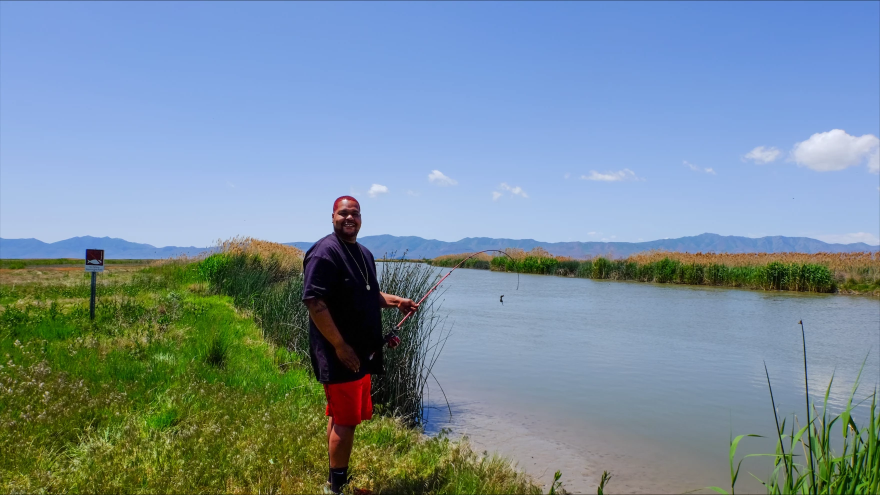
Kwame fishing the channels of the Bear River (Colleen Meidt, Utah Public Radio)
After taking a quick climb up the wooden view tower overlooking the vast wetlands, we started on the auto route tour’s 12-mile loop for some more serious birding.
With this 360 view, you can look out any window of the car and see a blanket of sky, mountain ranges as far as the eye can see, and on this day, lots of water.
This ecosystem is full of life. Along this tour we saw at least 15 species of birds: American avocet, coot, great blue heron, cinnamon teal, white-faced ibis, curlew, American white pelican, yellow-headed blackbird, and red-winged blackbird.
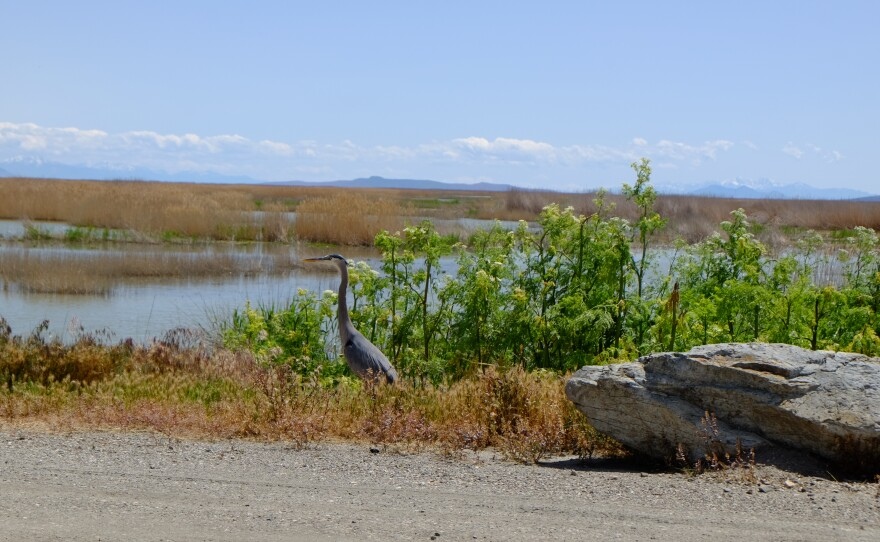
Great Blue Heron by the side of the road. (Colleen Meidt, Utah Public Radio)
Vollherbst said there are over 110 bird species that use the refuge throughout the year and 70 species that breed on the refuge.
The other big source of biodiversity here is the insects. While you might think they are all mosquitoes, many of these are actually non-biting midges. Some times of year have more bugs than others, so if you end up there during a buggy season just keep your windows rolled up and they won’t bother you.
All year there is something to see at the Bear River Refuge. The spring and fall are busiest as birds come and go from their migration.
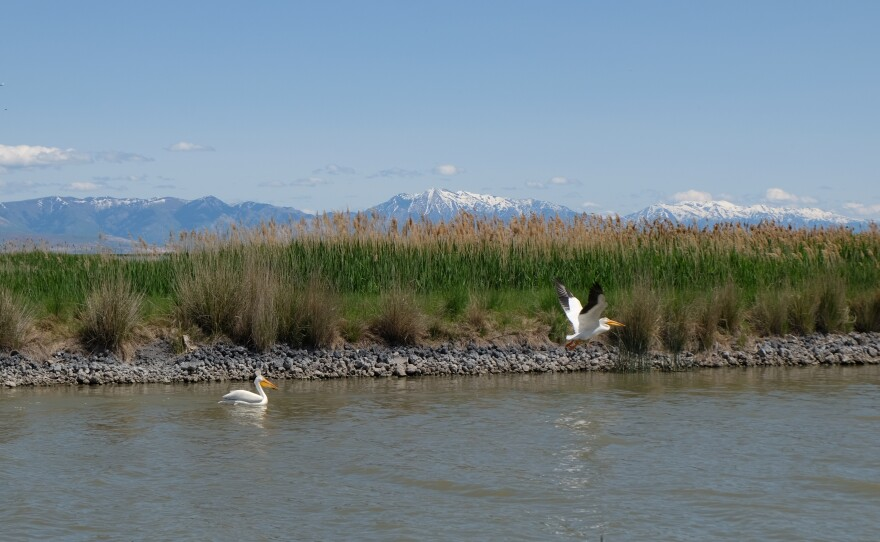
American White Pelican swimming and flying through the Bear River canals. (Colleen Meidt, Utah Public Radio)
“Every time I go out, it's like a new adventure because you never know what you're going to see. So I think it's because we're a migratory bird refuge, but we also do have breeding birds," Vollherbst said. "It's neat to see the auto tour throughout the seasons. It's always changing. It's always different. And you're always going to get kind of a different palette of birds that you're going to see as you drive along.”
Check out the Bear River Migratory Bird Refuge page for special events and environmental education opportunities.

